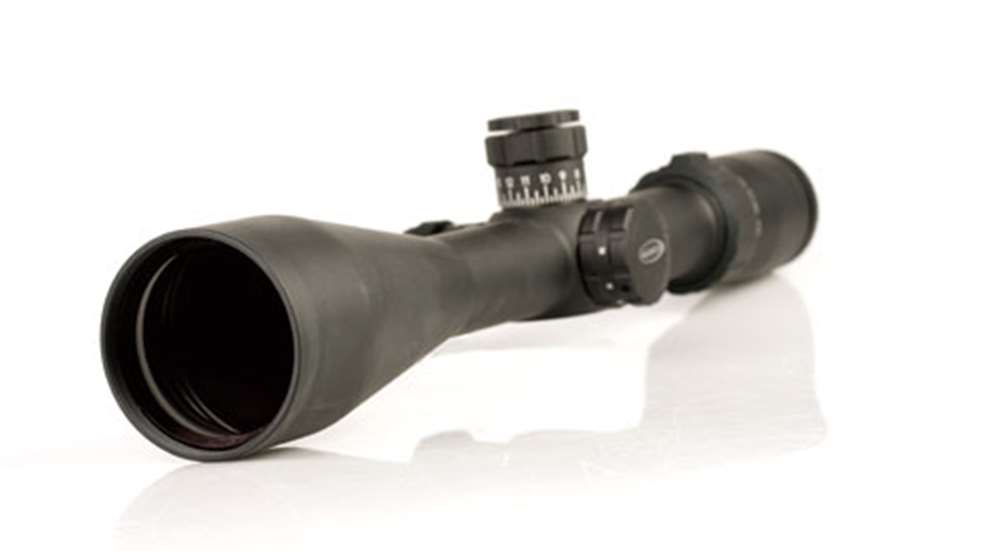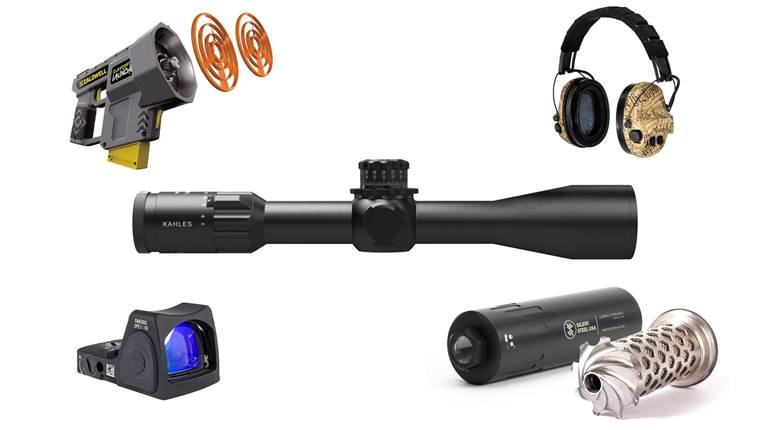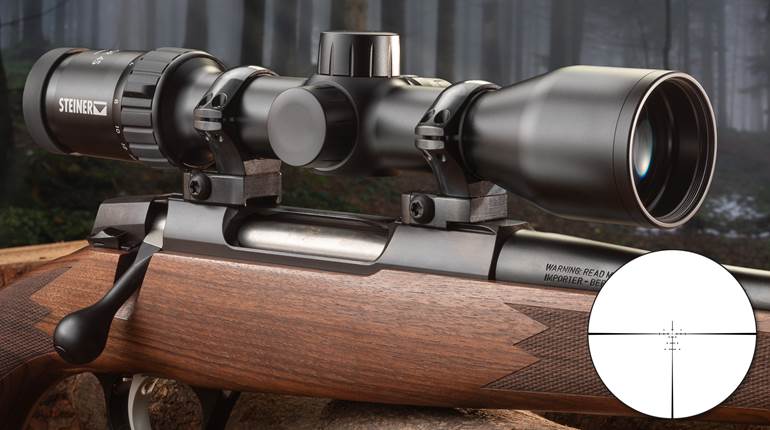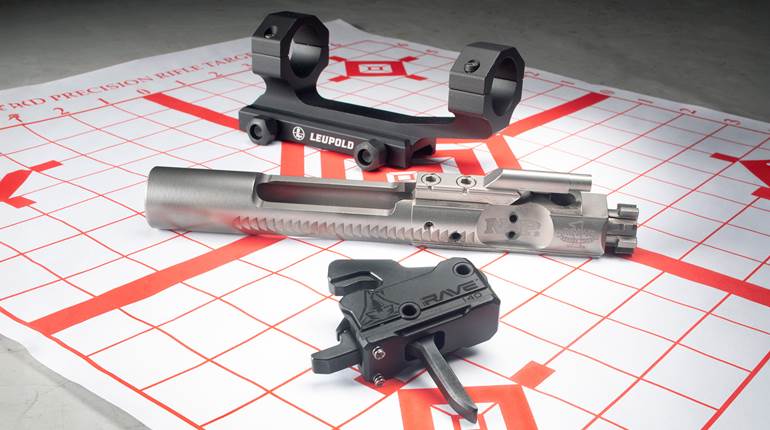
Weaver is best known for its hunting optics; however, the company is making inroads into the “tactical” marketplace with its like-named lineup. Evaluated here is the 4-20x50 mm Tactical riflescope.
To begin with, the Weaver 4-20x50 mm Tactical has a front focal plane (FFP) mil-dot reticle, 1/4-m.o.a. windage and elevation turrets, and an aluminum, one-piece 30 mm tube with a matte-black finish. Weighing 28 ounces, the scope has a good, solid feel, and it is touted as being waterproof, fog proof and shock resistant.
The mil-dot reticle is graduated to 10 mils both in elevation and windage and is contained within heavy 1/2-mil-thick posts. Even at 20X the crosshair is not excessively thick, allowing easy, precise points of aim at extended ranges. The reticle is substantial enough, though, that dark targets in shadowy environments are not a problem.
As for the turrets, they are of the cap-less, “push/pull”-adjustment type, and both the elevation and windage turrets have 55 inches of adjustment available in 1/4-m.o.a. increments at 100 yards. Zeroing the turrets is simple; the screw-on tops enable zeroing one-handed and without tools. The nature of the adjustment knobs ensures that no amount of battering will change the settings. The clicks are positive, but not unduly heavy to adjust.
The magnification band is immediately forward of the eyepiece, and while smooth, it is stiff enough that unintended contact is not going to disturb it. The scope’s parallax adjustment knob, which is located on the left side, moves easily.
The scope is manufactured in Japan, and the optical clarity of its glass is excellent. The lenses are fully multi-coated, and the exterior surfaces have an additional hard coating. In testing, it scored very well in side-by-side comparisons with scopes that cost significantly more than the Weaver.
The Weaver Tactical scope held up very well to all manner of live fire, whether mounted atop a Savage Model 110 BA in .338 Lapua Mag. (for shooting out to 1,000 yards), or a Savage Mark II TRR-SR .22 Long Rifle at 25 yards. To test the repeatability and accuracy of the turrets’ adjustment, a large box test was performed—36 m.o.a. (H) x 24 m.o.a. (W). When the group size (very small) was subtracted from the shot placements, the results were spectacular. The average vertical turret mechanical error at 100 yards was less than 0.068 inches. Its windage turret’s error was even better, measuring a mere 0.036 inches (or about 1/32 m.o.a.). The Weaver’s mechanicals were in keeping with the brand’s reputation for excellence.
During freezing and immersion tests an issue did arise; internal fogging occurred during the freezing portion. Contacting Weaver, the diagnosis was simply that the initial test scope was a pre-production model. A second scope was requested, and it exhibited no such issue.
Importer: Weaver; (800) 635-7656; www.weaveroptics.com
Model: 800360
Magnification and Objective: 4-20X 50 mm
Finish: matte-black anodizing
Field of View (Ft. @ 100 yds.): 25.1 (4X), 8.37 (20X)
Eye Relief: 3.94"
Exit Pupil: 9.52 mm @ 4X; 2.44 mm @ 20X
Click Value: 1/4 m.o.a. @ 100 yds.
Windage and Elevation Adjustment Range: 55" @ 100 yds.
Reticle: mil-dot (front focal plane)
Length: 147⁄8"
Weight: 28 ozs.
Features: 30 mm tube, saddle-mounted parallax focus, rubber-cushioned fast-focus ring, cap-less, reset-to-zero turrets, fully multi-coated lenses, argon purged
Accessories: anti-fog cloth, owner’s manual
Suggest Retail Price: $1,248





































